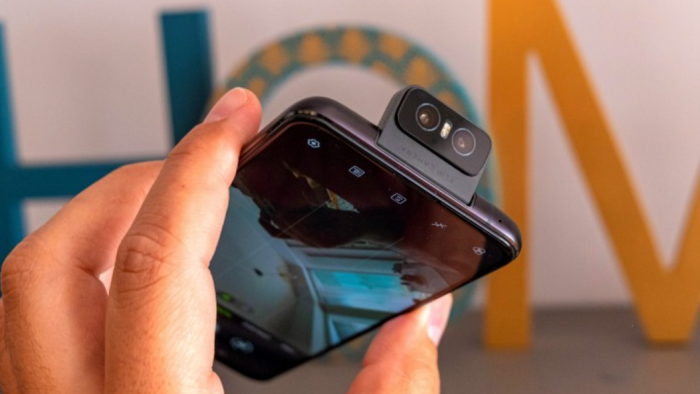After our first and second editions of the “Top 10 smartphones for selfies”, our third edition is here as we approach the end of the month. Of course, we can not have this column every month because not many smartphones with top front camera spec launch every month. As a result, some devices have been pretty constant irrespective of others that lose a place on a new edition. The likes of Huawei Mate 40 Pro, Huawei P40 Pro, Google Pixel 5, iPhone 12 Pro, and Vivo X60 Pro have appeared more than once in our bi-monthly column for best selfie smartphones.
If you are a selfie lover and this is the reason you buy smartphones, you will need to read the entire column. If you do not find anything interesting, click here to check out our previous columns on selfie smartphones. You can see our February 2021 edition and April 2021 edition for more options.
What do you look out for when getting a smartphone? Do you access the selfie camera performance? If yes, then the smartphones on this list will certainly not disappoint you. If you have been reading our previous column, then you must know by now that a high pixel does not always mean better image output. In fact, the likes of Huawei, Samsung, Google, and Apple hardly ever use above 20MP on their front camera. However, these companies have arguably the best front cameras in the industry.
Of course, in addition to pixel size, there are other details that selfie lovers should consider. We look at other front camera capabilities like software optimization, beautification features, AI features, portrait mode, and more.
Top 10 smartphones for selfies – Disclaimer
The devices in the list are, in our opinion, great smartphones for selfies. Since we don’t get to see great smartphones for selfies regularly, some devices from our previous column may make an appearance on this column. If you are a selfie freak or you buy your smartphones for their selfie ability, then check out our list with good recommendations.
1. Xiaomi Mi 11 Ultra
The Xiaomi Mi 11 Ultra comes with a rear 1.1-inch display which makes it possible for users to frame photos. Thus, this device can capture “selfie” images with its rear 50MP main camera. For many users, the front 20MP Tetrapixel camera will be used for video calls only. However, the 20MP front shooter also delivers good images. The front camera outputs images in its nominal resolution which means that the details will not be as high as the pixel number. However, the colour and dynamic range are pretty good. No doubt, this device is one of the best smartphones for selfies in the market.
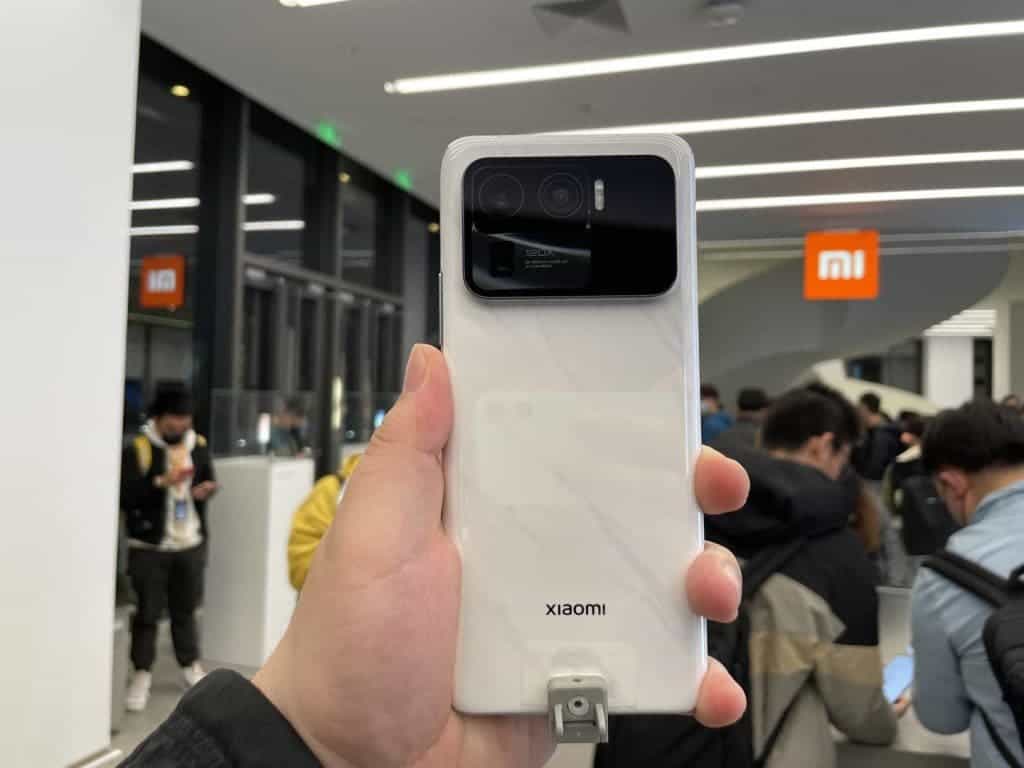
In portrait mode, the isolation of the subject is pretty cool. However, it is important to note that if you use the rear display to take selfies, you can not use portrait mode. The portrait mode only works with the front 20MP selfie camera. However, if you are not bothered about blurring the background, then you can enjoy high-quality selfies with the rear camera setup. Furthermore, the rear camera comes with a natural blur with its shallow depth of field. This means that using the rear camera, you may not need to artificially blur the background. Well, this strongly depends on users’ preference and how much blur is enough.
Of course, another importance of the Xiaomi Mi 11 Ultra selfie camera capability is its low-light environment shots. The front 20MP camera does well but the rear camera’s low light images are far better. Having an option is one thing that users will love. Furthermore, if you are using the rear display for selfies, you also have access to an ultrawide angle shot. This means that you can capture a lot of people without a selfie stick.
Key front camera specifications:
- 20 MP sensor with 0.8µm pixels
- Fixed-focus f/2.2-aperture lens
- Display flash
- 1080p@30/60fps, 720p@120fps, gyro-EIS
Xiaomi Mi 11 Ultra succinct spec preview
The Xiaomi Mi 11 Ultra is the companies latest flagship smartphone that comes with a 6.81-inch AMOLED display. This display supports 1B colours, 120Hz refresh rate, HDR10+, Dolby Vision, 900 nits (HBM), and 1700 nits. This smartphone supports a resolution of 1440 x 3200 pixels and a display ratio of 20:9 ratio. For protection, it uses a Corning Gorilla Glass Victus that makes it very resistant to falls. Under the hood, this device comes with a Snapdragon 888 SoC coupled with up to 12GB of RAM and 512GB of internal storage. On the rear, it has a triple camera setup which includes a 50MP wide-angle, 48MP periscope telephoto, and a 48MP ultrawide angle sensor. The battery size is only 5000 mAh and it supports 67W wired fast charging, 67W fast wireless charging, and 10W reverse wireless charging. This device also supports IP68 dust/water resistance.
2. Oppo Find X3 Pro
With its 32MP front camera, the Oppo Find X3 Pro is certainly on the list of smartphones for selfies this month. Like most of the smartphones on this list, the Oppo Find X3 Pro is a 2021 flagship that is designed to lock-horns with other flagships in the market. However, will the Oppo Find X3 Pro front camera output flagship performance? Let’s take a look succinct front camera specs of this smartphone
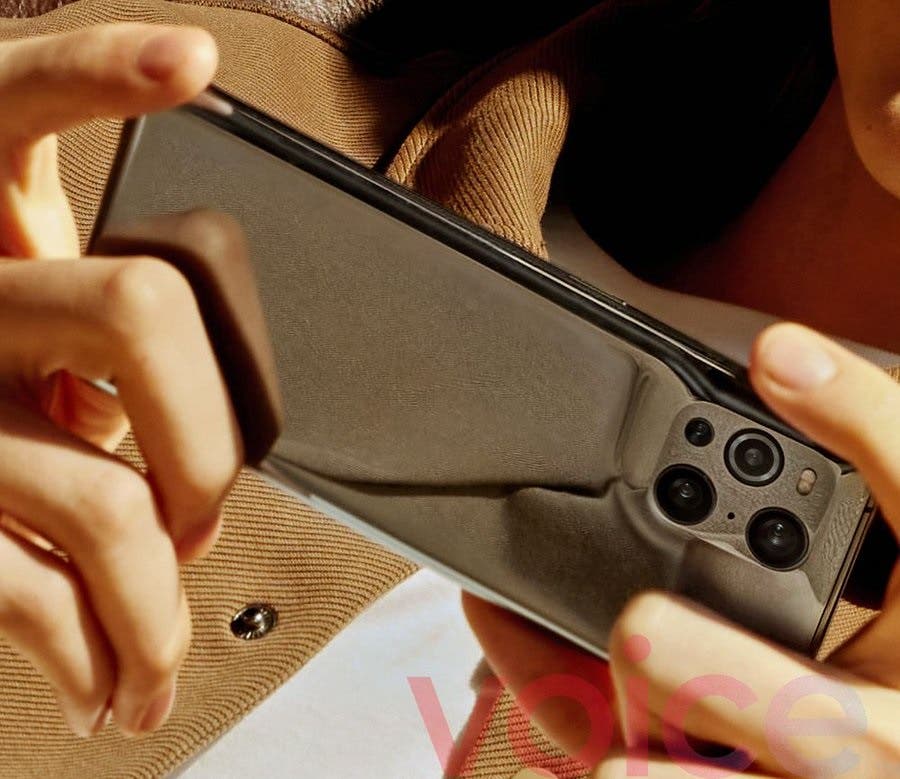
Key front camera specifications:
- 32MP sensor with 0.8µm pixels
- Fixed-focus f/2.2-aperture lens
- Panorama
- 26mm (wide), 1/2.8″
- 1080p@30fps
As we can see from the specs sheet above, the Oppo Find X3 comes with a 32MP front camera. The company used a Quad-Bayer color filter on this sensor to improve the overall output of the camera. However, the Oppo Find X3 Pro saves 32MP photos instead of the native 8MP ones. This implies that the output will not be as sharp as we will expect. However, we can not push the Oppo Find X3 Pro to the side, the front camera output is top-notch
Looking at the colours, contrast, and dynamic range, the 32MP selfie camera of the Oppo Find X3 Pro is perfect. As for the noise level, it is well above average and the details are quite impressive. Even when you downsize the images, they are quite good. Thus using this camera in its full 32MP output will definitely blow your mind. Of course, the front camera of this device supports portrait mode. This means that you can blur the background to eliminate unwanted details and focus on your face. The blur degree or intensity is also impressive and the quality is on par with regular selfie smartphones.
Oppo Find X3 Pro succinct spec preview
The Oppo Find X3 Pro comes with a 6.7-inch AMOLED display that supports 1B colours, 120Hz refresh rate, HDR10+, BT.2020, 900 nits (HBM), and 1700 nits (peak). This smartphone supports a resolution of 1440 x 3216 pixels and a display ratio of 20:9. For protection, it uses a Corning Gorilla Glass 5 that makes it quite resistant. Under the hood, this device comes with a Snapdragon 888 SoC coupled with up to 16GB of RAM and 512GB of internal storage.
On the rear, it has a quad-camera setup, that includes a 50MP wide-angle, 13MP telephoto, 50MP ultrawide angle, and a 3MP microscope sensor. The battery size is only 4500 mAh and it supports 65W wired fast charging, 30W fast wireless charging, and 10W reverse wireless charging. This device also supports IP68 dust/water resistance. The OPPO Find X3 Pro comes with an ultra-large and ultra-thin VC liquid cooling design.
3. Xiaomi Mi 10 Ultra
One great aspect of the Xiaomi Mi 10 front camera is that it offers good exposure even in very low light environments. In bright light environments, the Mi 10 Ultra is even more impressive However, the camera struggles while trying to capture wide brightness scenes and when HDC processing is active, it further lowers the target exposure. Also, this camera can lose some details if the light source is too high, for example, in a direct sunlight environment. Despite these downsides, the Xiaomi Mi 10 Ultra is generally a great selfie smartphone.
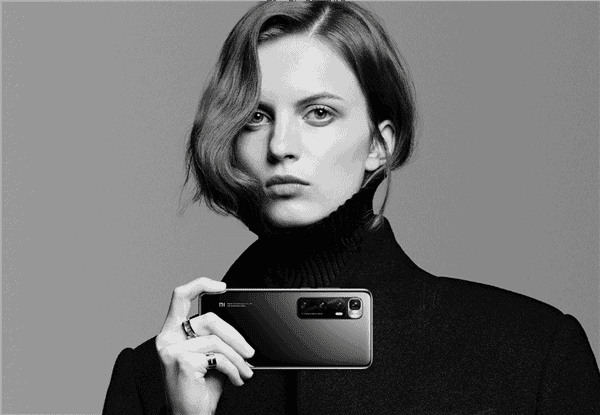
The colour of the Mi 10 Ultra front camera is vivid and pleasant and the white balance is neutral. Whether it’s outdoors or indoors, the white balance is quite accurate. Xiaomi ensured that the display of this smartphone can be used as a flash in a low-light environment. These attributes make this device one of the best smartphones for selfies even if it is a generation old.
The Xiaomi Mi 10 Pro portrait mode performance is a bit poor. Unfortunately, the Xiaomi Mi 10 Ultra does not improve on this. Nevertheless, it is still on par with many selfie cameras in the industry. The issue with the Mi 10 Ultra background blur is that it does not differentiate between foreground, mid-ground, and background. Thus, after background blur, you may find some areas without blur. However, after a few shots, we are sure that you will have the perfect shot that you need.
In all, the Xiaomi Mi 10 Ultra offers a pleasant and accurate exposure and colours. Furthermore, the subject segregation is also fairly accurate. This makes it a fairly good device for selfies.
Key front camera specifications:
- 20 MP sensor with 0.8µm pixels
- Fixed-focus f/2.3-aperture lens
- Display flash
- 1080p/30 fps video
Xiaomi Mi 10 Ultra succinct spec preview
The Xiaomi Mi 10 Ultra comes with a 6.67-inch OLED display that supports 1B colours, 120Hz refresh rate, HDR10+, 800 nits (HBM), and 1120 nits (peak). This smartphone uses a resolution of 1080 x 2340 pixels and a display ratio of 19.5:9. For protection, it uses a Corning Gorilla Glass 5 that makes it quite resistant. Under the hood, this device comes with a Snapdragon 865 SoC coupled with up to 16GB of RAM and 512GB of internal storage. On the rear, it has a quad-camera setup, that includes a 48MP wide-angle, 48MP periscope telephoto, 12MP telephoto, and a 20MP ultrawide angle sensor. The battery size is 4500 mAh and it supports 120W wired fast charging, 50W fast wireless charging, and 10W reverse wireless charging.
4. OnePlus 9 Pro
The OnePlus 9 Pro comes with the same sensor that has been on OnePlus’s shelf since the OnePlus 7 Pro. However, what makes this sensor different on the OnePlus 9 Pro? The company has not removed this sensor from its lineup because the details are quite good and the colour performance is more than average. This sensor also offers a decent dynamic range for portrait images in a bright environment. This smartphone comes with only a 16MP selfie camera but the output is very fair.
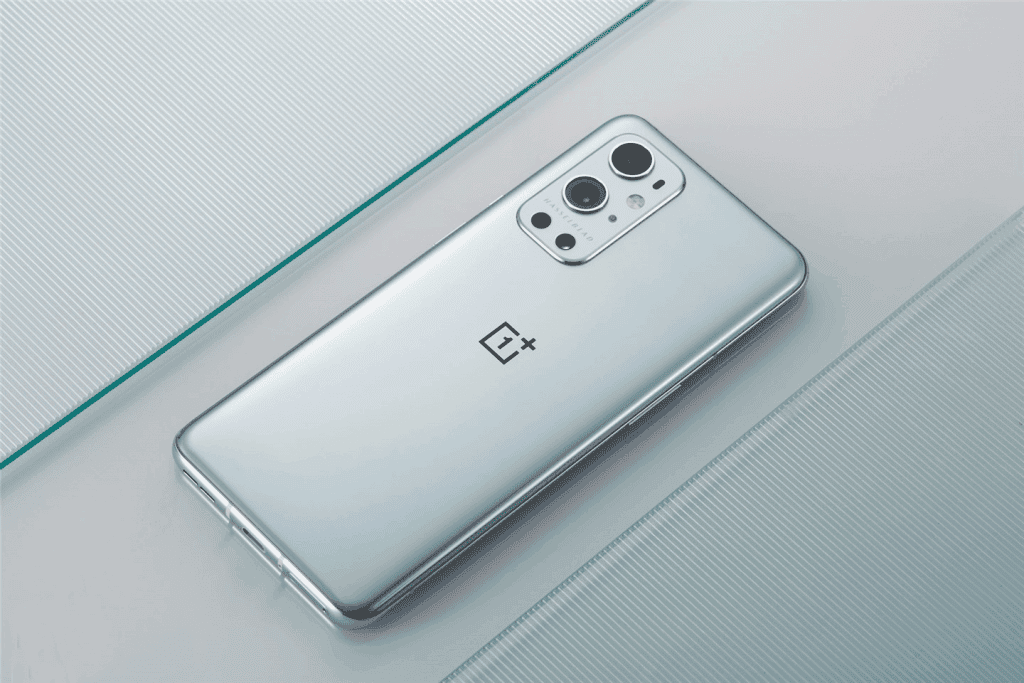
Key front camera specifications:
- 16 MP sensor with 1.0µm pixels
- Fixed-focus f/2.4-aperture lens
- Auto-HDR
- 1080p/30 fps video, gyro-EIS
However, this sensor is a bit below par when it comes to shooting in a low-light environment. The gyro-EIS is a plus but OIS would have been better, not that many front cameras use OIS anyway. Furthermore, this device does not come with autofocus which is another minus. Considering that the OnePlus Nord comes with a separate ultra-wide front camera that even supports 4K, many users may not like the single-person field of view front camera on the OnePlus 9 Pro. This sensor also supports portrait mode and the background blur is quite good with excellent intensity. Nevertheless, the user does not have any control over the background blur which is not attractive.
OnePlus 9 Pro succinct spec preview
The OnePlus 9 Pro is a 2021 flagship and it comes with features that are befitting for a 2021 smartphone. First off, this smartphone comes with a 6.67-inch LTPO Fluid2 AMOLED display. Due to its ultra-thin bezels, this device boasts a 90.3% screen-to-body ratio and has a resolution of 1440 x 3216 pixels. Under the hood, this device comes with a Snapdragon 888 SoC coupled with up to 12GB of RAM and 256GB of internal storage. On the rear, it has a quad-camera setup, that includes a 48MP wide-angle, 8MP telephoto, 50 ultrawide, and a 2MP monochrome sensor. The battery size is 4500 mAh and it supports 65W wired fast charging and 50W fast wireless charging. This device also supports IP68 dust/water resistance
5. Asus Zenfone 6
The selfie camera spec sheet below of this smartphone may be surprising to some readers. Do not let it surprise you, the Asus Zenfone 6 uses the same camera setup on the rear and front with its unusual rotating camera design. This camera delivers an excellent texture with decent details irrespective of the light level. Whether in a bright environment or a low-light environment, the camera output is pretty decent. Somehow, this smartphone manages to keep the noise under control which is a plus for this device.
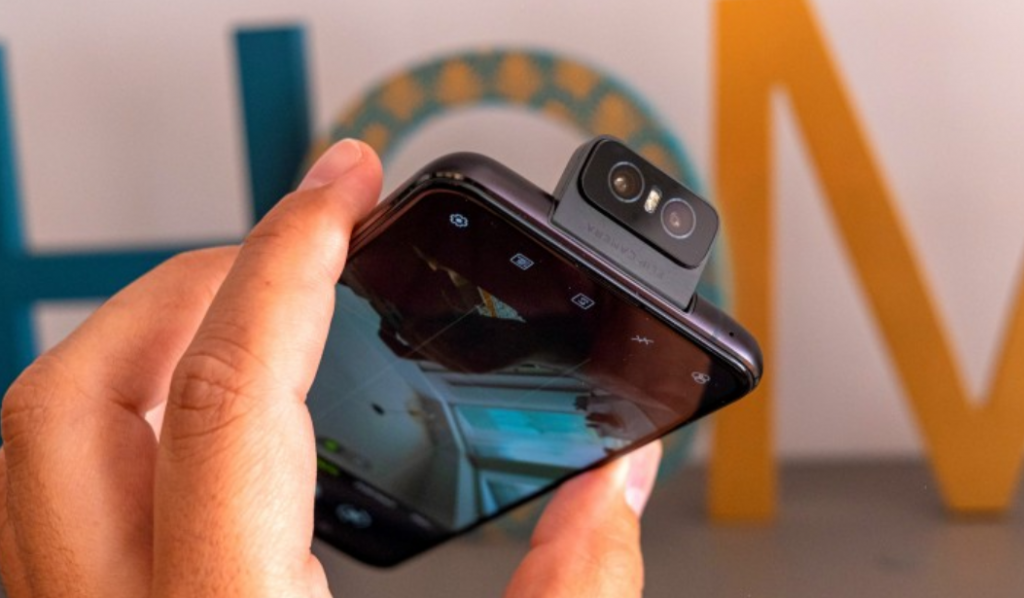
Key front camera specifications:
- Rotating dual-camera
- Primary 48Mp Sony IMX586 1/2″ sensor, f/1.8-aperture lens with 26mm-equivalent focal length
- Ultra-wide: 13Mp sensor, f/2.4-aperture lens with 11mm-equivalent focal length
- PDAF and laser autofocus on primary camera
- 2160p video at 30 frames per second (4K)
The still images on this one are excellent with great colour renders and a pleasant white balance. Whether the user takes a close-up image or uses a selfie stick, the object focus is great with its well-tuned autofocus system. When shooting a one-person selfie, the shallow depth of field is a plus for this camera. However, if there are many people in the image, this is a disadvantage because it focuses on people in front while the others will be out of range.
This smartphone comes with a dual-LED flash which improves the camera performance in a low-light environment. Furthermore, the dual-camera setup ensures that the bokeh simulation mode delivers excellent results.
One of the most important aspects of this camera is its support image stabilization. This means that you do not have to stand like a statue before you capture a great selfie. Whether you are walking or like a human that you are, your hands were shaking, the camera output is still great.
Generally, with the rear camera acting as the selfie shooter, you can be sure that there little or nothing to complain about regarding this smartphone. The exposure, contrast, dynamic range is great. Furthermore, the exposure of this smartphone is pretty excellent.
The Asus Zenfone 6 is a 2019 smartphone but you will agree with me that the rear camera of a 2019 flagship is still ahead of the front camera of a 2021 flagship. This is why the Zenfone 6 is still considered one of the top smartphones for selfies this month. Also, this device costs less than $500 which makes it more attractive.
The smartphones above are our new additions to the top 10 list of selfie smartphones for June 2021. Other devices which we consider fit for this month have made an appearance in our February or April editions. In case you missed them, see their details below
6. Huawei Mate 40 Pro
There is a reason why the Huawei Mate 40 Pro is on top of DxOMark’s selfie camera rating with 104 points. This smartphone uses some of the best selfie camera optimizations in the industry. In our previous edition, we listed the Huawei P40 Pro+ which also has a great selfie camera. Nevertheless, Huawei Mate 40 Pro offers much more
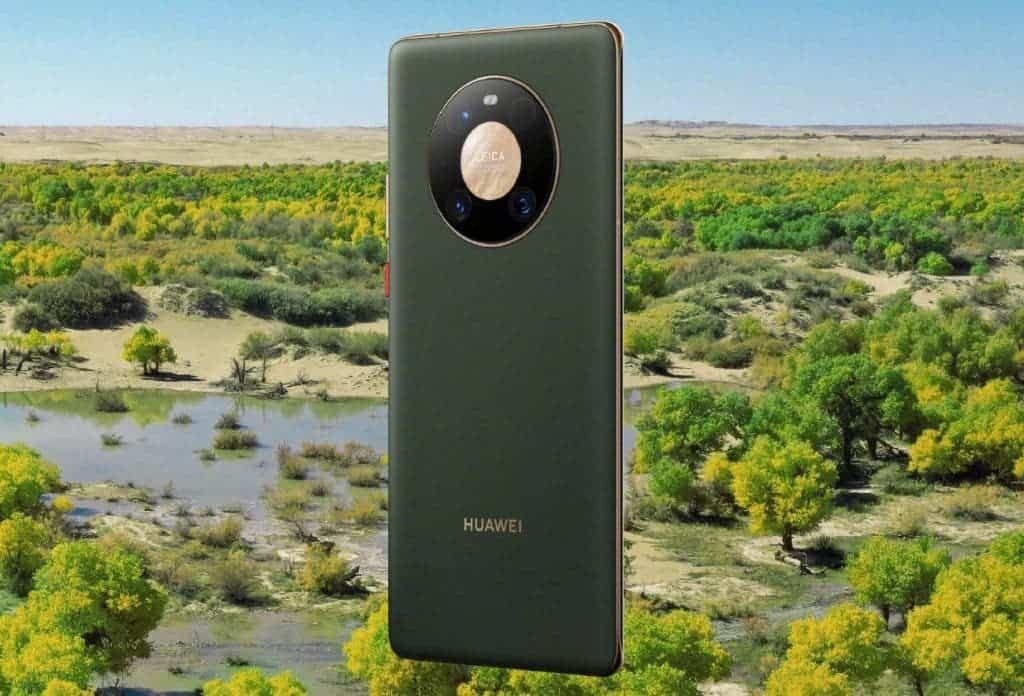
Key front camera specifications:
- Primary 13 MP 1/2.8″ sensor
- f/2.4 – aperture lens with 18 mm-equivalent focal length
- Time-of-flight camera for depth estimation
- Fixed focus
- Display-flash
- 4K video at 30fps
The Huawei P40 Pro comes with Face Beautification. With this feature, you just relax and let the phone do all the editing for you. One of the strengths of the Huawei P40 Pro is its noise reduction, good colour exposure, and excellent bokeh. With the dedicated IR sensor, the bokeh shots are nothing short of excellent. This sensor provides accurate depth estimation and masking around the subject during background blur. While the focus is great, it is probably the only aspect of this camera that the industry has better. Nevertheless, the focus capture faces perfectly at close range but appears to lose details as the distance gets longer (even using a selfie stick).
Whether you are dealing with indoor or outdoor shooting, the Huawei Mate 40 Pro+ is pretty impressive. The accurate autofocus and image stabilization make this camera even more attractive. Overall, there is very little or nothing to complain about with the Huawei Mate 40 Pro+
7. Huawei Mate 40 Pro succinct spec preview
Before you fall in love with any Huawei device presently, it’s important to know that it does not come with Google Mobile Services. This means that you can have access to Google Play Store. No Gmail, Google Map, YouTube, nothing. Thus, if you are living outside China, you may want to think about this before you consider this device. Although Huawei has HMS, which is supposed to be an alternative for GMS, it is not quite at GMS’s level and is still lacking some relevant apps. However, if GMS is not a problem, this smartphone has some interesting specs
The Huawei Mate 40 Pro comes with the 5nm Kirin 9000 SoC coupled with 8GB of RAM and 128GB/256GB/512GB of UFS 3.1 internal storage. Furthermore, this device uses a 6.76-inch display that supports 1344 x 2772 pixel resolution as well as a 90Hz refresh rate. Under the hood, there is a 4,200 mAh battery that supports a 66W fast charge, 50W wireless charging, and 5W reverse wireless charging. The battery department is one of the selling points of this smartphone. As of now, there are not many smartphones with 40W wireless charging capacity in the industry.
Huawei P40 Pro
If the Huawei P40 Pro is better than the Mate 40 Pro, it would be because of its double pixel size. The Huawei P40 Pro comes with a 32MP 1/2.74-inch sensor and a 26mm-equivalent lens with f/2.2 aperture. Furthermore, this smartphone comes with a dual-camera setup on the front. This is the latest trend in the smartphone market. The camera comes with a bokeh mode that uses a secondary infrared (IR) camera for depth sensing and also supports autofocus.
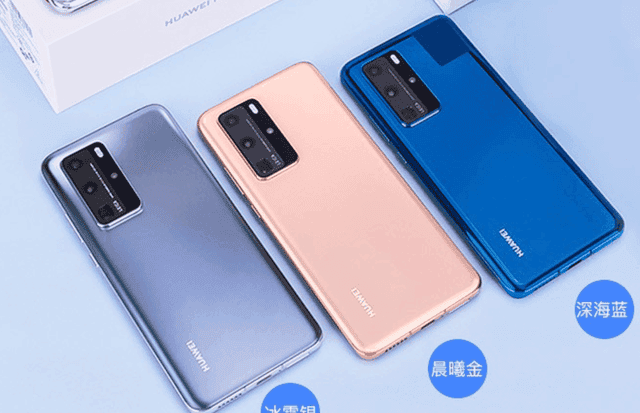
Key front camera specifications:
- Dual front camera
- 32MP 1/2.74-inch sensor with 0.8µm pixels
- 26mm-equivalent f/2.2-aperture autofocus lens
- IR 3D sensor for depth estimation and autofocus
- 4K 2160/30fps video
Before the arrival of the Huawei Mate 40 Pro, the P40 Pro was on top of DxOMark front camera ranking for many months. This smartphone comes with top-notch focus with no instabilities. At close and medium range, the capture of users’ faces is very sharp. At longer distances, the faces are sharp, however, there is some noise in the background. Despite the loss of background details from a longer range, the performance of this device’s front camera is still perfect.
The exposure, colour, flash, noise, and bokeh effect are the strong parts of this smartphone. With the Huawei P40 Pro dedicated IR sensor ensures that its bokeh shots are very impressive. The depth estimation for this device is good and it perfectly eliminates all objects in the background with its blur.
In addition to the top performance of the front camera for images, the video performance is also excellent. According to users, the video and 4K capacity of this smartphone are excellent. It has top exposures, accurate autofocus, effective stabilization as well as pleasant colours. Even in low light conditions, the 4K front camera is not entirely the best but its top quality. If you need good front camera output in terms of images and videos, the Huawei P40 Pro is a smartphone to consider.
Huawei P40 Pro succinct spec preview
This smartphone comes with a 6.58 inch AMOLED display that supports a resolution of 1200 x 2640 pixels (~441 PPI density). Under the hood, we have a Qualcomm Snapdragon Kirin 990 5G (7 nm+) coupled with up to 8GB of RAM and 128GB/256GB/512GB of internal storage. On the rear, it uses a quad camera setup. It has a 50MP main camera, a 40MP (ultrawide), 12MP periscope telephoto, and a ToF 3D sensor. To keep its lights on, this device uses a 4200 mAh battery that supports 40W fast charging, 27W wireless fast charging, and 27W reverse fast reverse wireless charging. This device comes with EMUI 10.1 on top of Android 10 with no Google Play Services.
8. iPhone 12 Pro
On the front of the iPhone 12 Pro is a 12 MP 1/3.6-inch sensor behind a 23 mm-equivalent f/2.2 lens. It also comes with a Structured Light (SL) sensor for depth sensing to simulate background blur. Apple almost always uses a great selfie camera. In fact, we can consider Apple as one of the few brands in the industry with “many” smartphones for selfies. Although the competition is getting tougher, Apple is still holding on to its own. On paper, the iPhone 12 Pro selfie camera might not sound that special. After all, it comes with a 12MP f/2.2 sensor. However, the optimizations and quality are top-notch.
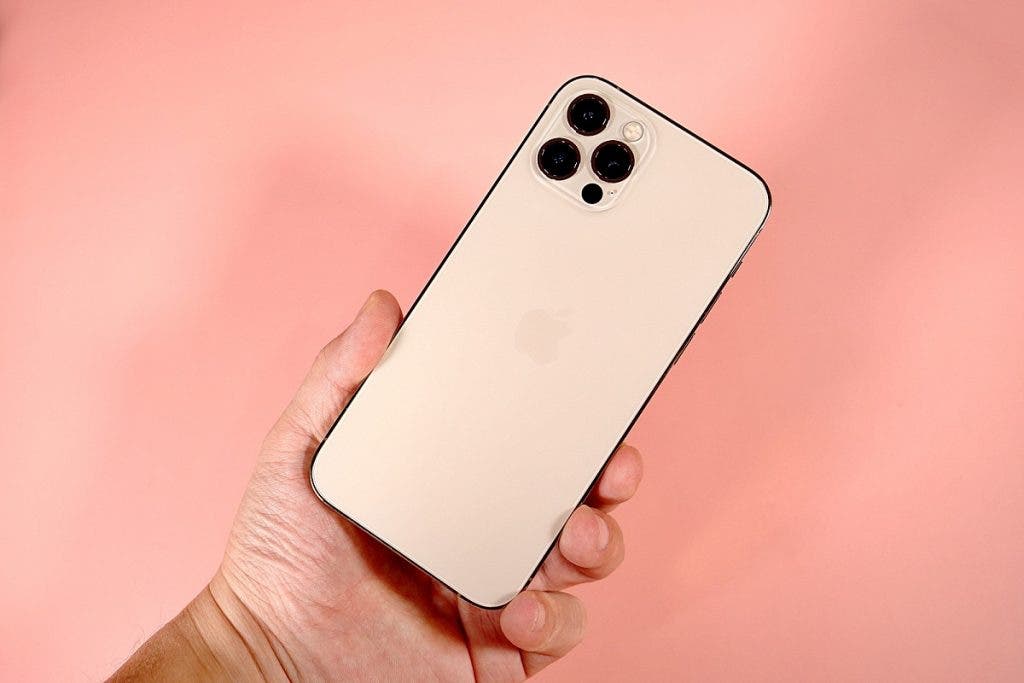
Key front camera specifications:
- Dual front camera
- 12 MP 1/3.6-inch sensor with 23 mm-equivalent f/2.2-aperture lens
- SL 3D sensor for depth estimation
- 4K 2160p Dolby Vision HDR video at 24/30/60 fps, 1080p at up to 120 fps, gyro-EIS
This device is great for quality portrait images with a depth sensor. The night mode feature is fairly good and a low-light environment is surely not a problem. Its autofocus feature ensures that faces are super clear but its performance is optimized for a 30cm to 90 cm range. However, above 90 cm, say at 120 cm, the depth of field sensor ensures that the selfies remain sharp. Looking at the bokeh, stabilization modes, and other features, the iPhone 12 Pro obviously stands out as one of the top-notch smartphones for selfies in the industry presently.
iPhone 12 Pro succinct spec preview
The iPhone 12 Pro comes with a 6.1 inch Super Retina XDR OLED that supports 1170 x 2532 pixel resolution and a 60Hz refresh rate. Under the hood, this smartphone uses the Apple A14 Bionic 5nm chip. This device uses 6GB of RAM and 128GB/256GB/512GB of internal storage. On the rear, it has a triple camera setup, all 12MP sensors. It includes a wide-angle, telephoto, an ultrawide angle, and a TOF 3D LiDAR sensor. The battery size is only 2815 mAh and it supports 20W fast charging and 15W wireless charging.
9. Vivo X60 Pro
There is no doubt about Oppo’s performance in the selfie camera department. In fact, this company as well as Vivo places more emphasis on the front camera performance. These days, Oppo hardly uses a selfie camera below 20MP. The Vivo X60 Pro comes with a 32 MP front camera and the output is great.
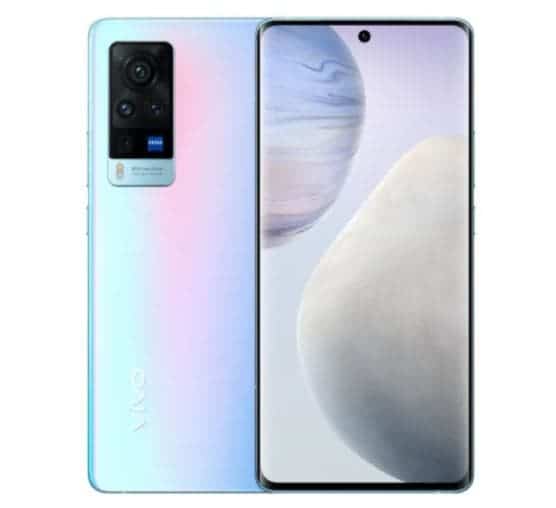
Key front camera specifications:
- Primary 32 MP
- F/2.5, 26mm (wide), 1/2.8″, 0.8µm
- HDR
- 1080p@30fps
The front camera supports HDR and 1080p@30fps videos. However, it lacks support for 4K videos which is a down point of this device. However, this device has some interesting features like portrait video, colour pop mode, and Night Mode tripod setting that make it stand out. Interestingly, the video mode of this device supports Ultra Steady stabilization and anti-shake algorithms. Not many manufacturers include stabilization features for the front camera. The final output is quite excellent with a focus on the face.
Just like other Vivo devices, this smartphone comes with an aggressive EIS algorithm. Thus, its 1080p videos are quite with this feature. Although there are a couple of smartphones for selfies above this device, it delivers just enough to be on this list.
Vivo X60 Pro succinct spec preview
This smartphone comes with a 6.56 inch AMOLED display that supports 1080 x 2376 pixels resolution. This smartphone also comes with the Snapdragon 870 5G (7 nm) and supports 12GB of RAM and 256GB of UFS 3.1 storage. It uses a triple-rear camera setup. It has a 48MP main camera with 13MP (ultrawide), 13MP (telephoto) sensors. To keep its lights on, this device uses a 4200 mAh battery that supports 33W fast charging. Other features include 5G wireless connectivity, Wi-Fi, Bluetooth 5.1, and Funtouch 11.1 (Android 11).
10. Google Pixel 5
Some readers will finally get a sigh of relief after seeing the Google Pixel 5 on this list. Not that there is anything special with the Google Pixel 5, but there is something special with Google Pixel cameras. Whoever knows smartphones should know that when it comes to camera optimization, Google is the best in the business. The front camera of the Google Pixel 5 does not disappoint as expected.
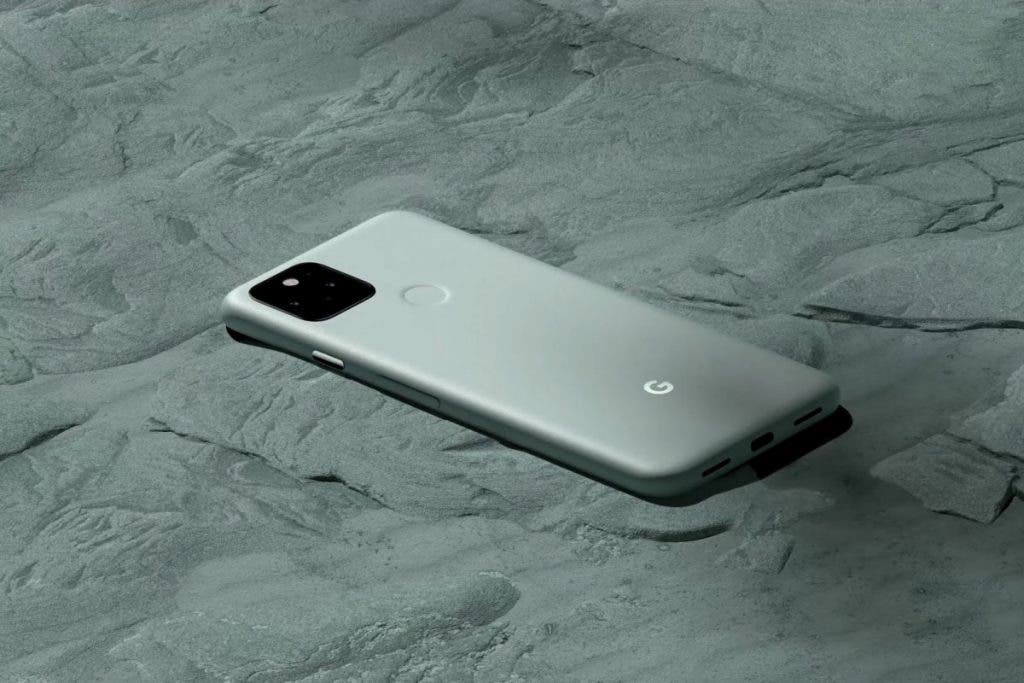
Key front camera specifications:
- 8MP 1/4.0″ sensor
- f/2.0-aperture lens with 24 mm-equivalent focal length
- Fixed focus
- Display-flash
- 1080p video at 30 fps
With only 8MP upfront, this smartphone has the smallest pixel size on this list. However, its software optimization is second to none. This smartphone is supposed to be Google’s flagship but the company had to cut some corners to reduce the cost. This of course affected the overall performance of the camera of this device.
Overall, there is not much to complain about regarding the front camera of this device. The colour output, white balance, focus, and other features are quite decent. More importantly, is that this camera puts the noise under perfect control even in low-light environments.
According to DxOMark, “the Pixel’s bokeh simulation offers good depth estimation, with only minor artifacts around the foreground subject. However, there is no blur gradient and spotlights in the background are rendered with low contrast, resulting in a slightly unnatural effect”.
Google Pixel 5 succinct spec preview
To reduce cost, Google opted to use the Snapdragon 765G, which is not entirely bad. However, relative to its competitors, it is a step behind. This smartphone comes with a 6-inch display that supports 1080 x 2340 pixel resolution as well as a 90Hz refresh rate. This device offers 8GB of RAM and 128GB of internal storage. Furthermore, this device comes with a 4,080 mAh battery that supports an 18W fast charge, 12W wireless charging, and 5W reverse wireless charging.

